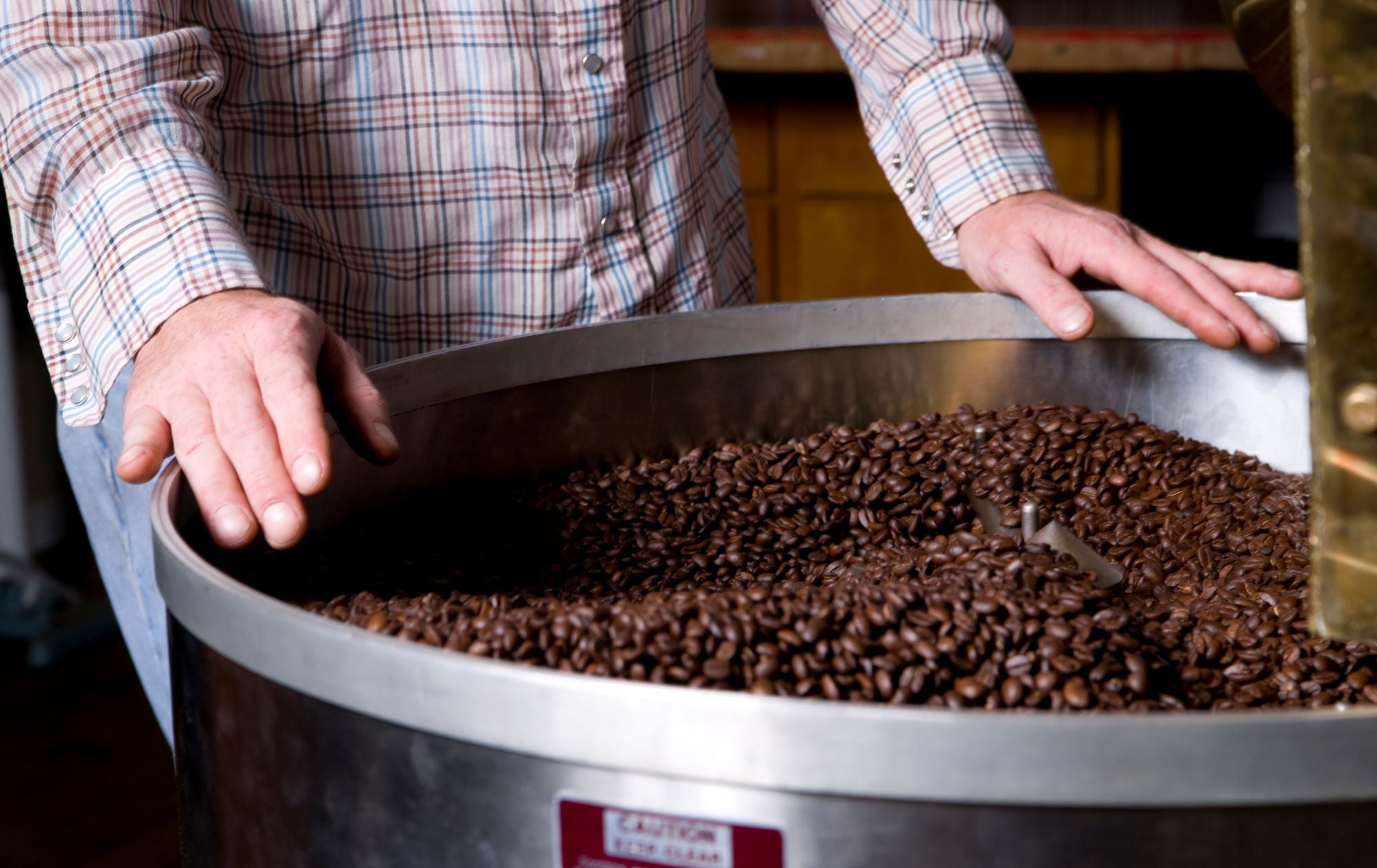
All About Coffee Roasting
You know all about the journey coffee beans take to get from the plant to your cup, but this is just the beginning! After being picked, processed, and graded, the beans are still green - that is, they’re raw. In order to get the aromatic, rich aromas and flavours that you know and love, the coffee beans must be roasted.
The History of Roasting Coffee
Can you imagine buying coffee beans in the 1700s? If you pictured a process similar to how you buy them today but dressed in period clothing, you may be surprised to know that roasted coffees were not readily available at local stores.
Instead, people purchased the green coffee beans and roasted their own coffee at home.
It was around this time that it was discovered the coffee beans roasted best when they were in motion. People quickly discovered that if the beans were not stirred or moved, the coffee would take on a burnt taste. You can still roast coffee the same way they did at that time.
Using a Skillet
To do this at home, use a metal skillet - not a non-stick pan - and roast the coffee on top of the stove with medium heat. The beans must constantly be in motion; much like making stovetop popcorn, you will need to move the pan back and forth to keep the beans moving and prevent them from sticking. Alternatively, you can stir the coffee beans constantly.
Using the Oven
Another way to “cook” the green coffee beans would be to roast them. To do this, spread the green coffee beans evenly on a cookie sheet and place in the oven at 375°F - 400°F. Doing this still requires the beans to be stirred every 5 minutes.
Commercial roasters work on the same principals, but at a much larger scale.
There are three types of coffee roasters:
- the continuous roaster, which is used by large, mass-scale coffee producers
- the fluid bed roaster, which uses a convection system to distribute heat evenly
- the drum roaster.
At Aladdin, we use the drum roaster in our facilities.
The Drum Roaster
Drum roasters come in many different sizes and can roast anywhere from 5 to 150 pounds of coffee per batch. Roasting is controlled by the master roaster, who samples batches with a tinge (a spoon-like device built into the roaster). The master roaster must watch the colour of the roast carefully - this is where the mastery of roasting really comes into play!
When the coffee has reached the desired color, the heat is turned off and the beans are poured into a cooling tray. Cold air is drawn through them and they are stirred so they cool evenly. If the beans are not immediately cooled, they will continue to roast, which would spoil the taste profile the roaster was aiming to achieve.
Once the roasted coffee beans have reached room temperature, they are moved to holding containers where they are stored until purchase.
The Different Types of Coffee Roasts
You walk into a coffee shop and ask to buy some Colombian coffee.This roast may be a medium-brown colour, but if you walk down the street and purchase the same style Colombian roast from another shop, it may be very dark brown instead and taste completely different. This is because each coffee roaster has their own style of roasting, but is there a correct way?
The short answer is no, there is generally no right or wrong way to roast coffee. It is mostly a matter of preference by the coffee roaster.
Think of roasting coffee like cooking a steak.
Perhaps you prefer grilling your steak, or maybe you use a frying pan. There are many different ways to cook the steak, and each of those ways use different heat. At the same time, there is an ideal temperature for cooking steak. Too little heat, and it will take forever to cook.Too much, and it will burn on the outside before the inside is cooked.
The same goes for coffee.
Too little heat and the beans will never fully develop, while too much heat will yield a burnt flavor. Ideally, coffee beans should be roasted where heat is applied at an even rate so the internal temperature of the coffee beans is gradually increased to 400°F for a period of 7 to 9 minutes. During this time, moisture is driven out of the coffee bean, which will gradually turn from green to yellow, then tan, and finally to a light brown colour. At this point, the beans “pop” and crackle and can now be considered ready for brewing.
Like steak, the length of time coffee beans are “cooked” affects the flavour.
Cooking a rare steak will take less time than cooking a medium steak, and both ways have different flavour profiles - one of which you might prefer over another. The longer the coffee beans are roasted the darker they become.
In general, these are the different types of roasts most coffee lovers will find:
- Light Roast (Cinnamon Brown) - Canadians’ preferred roast
- Medium Roast (Dark Brown, touch of oil) - Sweet, hint smoke
- French Roast (Near Black, oily) - Caramel sweet, smoke, strong
Coffee Blends
Many coffee roasters have found that by mixing two or more types or roasts together they were able to enhance and develop the best flavors in the coffees. By mixing the coffees they also mellowed out any undesirable flavors, which produced a fully balanced coffee with new flavors and tastes. Many of these blends are proprietary to each coffee roaster - sort of like a trade secret!
Roasting is both an art and a science, and requires experience and skill to master.
Vienna-style roasting creates a medium roast that has the refined profile of a darker bean at a lighter roast. Beans from Central and South America come together to create this smooth and delicately nuanced coffee.
Buy Now